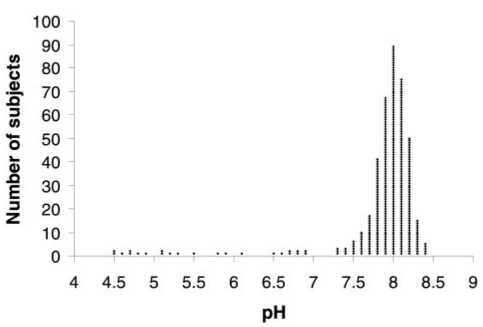Exhaled Breath Condensate pH is one of the most validated biomarkers in EBC. There are many publications linking low EBC pH to various lung diseases and offering reasons to consider pH as part of an exhaled biomarker study. We won’t be exploring the “why” here; just the “how”.
There are three main components to the study of Exhaled Breath Condensate (EBC) pH:
- Collection
- Gas Standardization by Deaeration
- pH measurement
We’ll discuss each of these independently.
BREATH CONDENSATE COLLECTION
There are several ways to collect Exhaled Breath Condensate. Choose one with the following considerations in mind:
- Collection Temperature: Collect condensate as liquid and not ice. Flash-freezing exhaled breath vapors can drive certain volatiles which contribute to pH out of solution and affect your results. The RTube uses a passive cooling sleeve that can be chilled to any desired temperature. The EcoScreen has a fixed collection temperature. Consult your manual or call their technical support staff to determine the temperature applicability of your EcoScreen. Homemade devices usually rely on water ice for cooling and will likely condense breath as liquid.
- Cleanliness of device: Be sure your collector is clean. The RTube is cleaned at they factory in a class 10,000 clean room using alcohol, reagent-grade DI water, and a filtered jet-dry to ensure a clean condensation surface. The EcoScreen and homemade device are cleaned using a variety of procedures. Consult the literature for established cleaning protocols
- Isolation of Condensate: Breath pH does not equal salivary pH. Be sure you are not contaminating your specimen with saliva.
GAS STANDARDIZATION BY DEAERATION
You will need a source of carbon dioxide-free gas. We prefer Argon, but oxygen and nitrogen are suitable. You will also need a pH probe suitable for use in very dilute fluids, a regulator for the tank, tubing and glass pasteur pipettes:
- Aliquot 300 – 500 ul of EBC sample in a 1.5 ml micro centrifuge tube.
- Attach one end of the tubing to the tank regulator and the other onto the glass pipette.
- Turn on the Argon flow (very gently).
- Slowly lower the pipette into sample. Prevent the sample from bubbling out of the microcentrifuge tube by adjusting the flow from the tank until the sample is bubbling at a steady rate. Bubble the sample for ~ 8 minutes and then insert the probe into the sample.
- After 8 minutes raise the pipette out of the sample insert the micro pH probe into the sample and wait for the sample pH to stabilize.
- If the pH has not stabilized continue to bubble Argon through the sample for another 5 minutes and measure again.
Publications about EBC pH and Deaeration:
http://www.ncbi.nlm.nih.gov/pubmed/14680074
http://www.ncbi.nlm.nih.gov/pubmed/21385108
pH MEASUREMENT OF BREATH CONDENSATE
Recommended pH probe for EBC pH:
http://www.thermoscientific.com/en/product/orion-perphect-ross-combination-ph-micro-electrode.html
Note that the pH meter does not seem to matter; just be sure it is compatible with the probe.
This should get you started. Please feel free to call us for clarifications and support no matter which collection device you choose for your studies. We are glad to help and look forward to speaking with you!
Image: perfexis.org | Medicine of the Future in America
